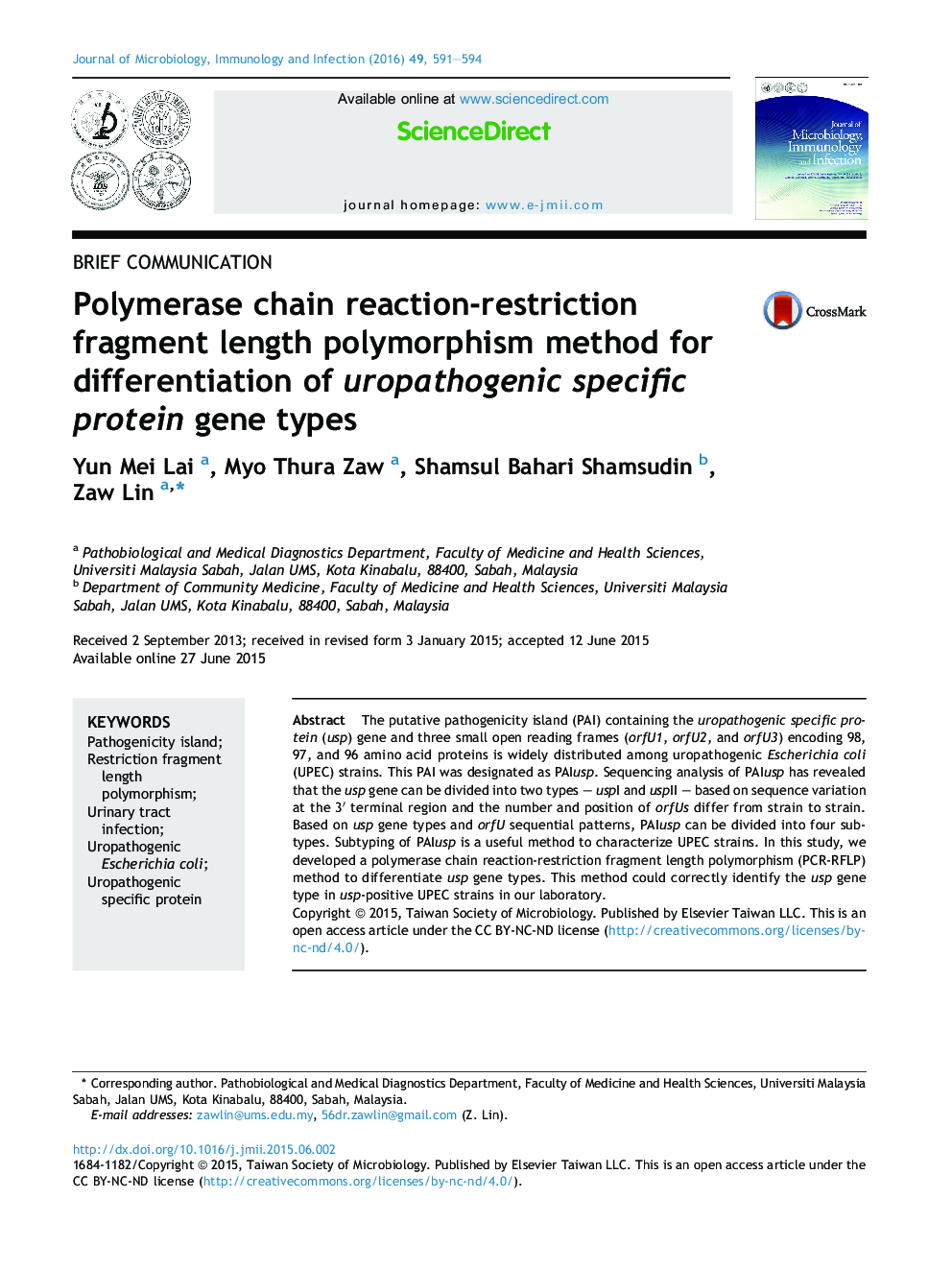| Article ID | Journal | Published Year | Pages | File Type |
|---|---|---|---|---|
| 3377683 | Journal of Microbiology, Immunology and Infection | 2016 | 4 Pages |
The putative pathogenicity island (PAI) containing the uropathogenic specific protein (usp) gene and three small open reading frames (orfU1, orfU2, and orfU3) encoding 98, 97, and 96 amino acid proteins is widely distributed among uropathogenic Escherichia coli (UPEC) strains. This PAI was designated as PAIusp. Sequencing analysis of PAIusp has revealed that the usp gene can be divided into two types – uspI and uspII – based on sequence variation at the 3′ terminal region and the number and position of orfUs differ from strain to strain. Based on usp gene types and orfU sequential patterns, PAIusp can be divided into four subtypes. Subtyping of PAIusp is a useful method to characterize UPEC strains. In this study, we developed a polymerase chain reaction-restriction fragment length polymorphism (PCR-RFLP) method to differentiate usp gene types. This method could correctly identify the usp gene type in usp-positive UPEC strains in our laboratory.
